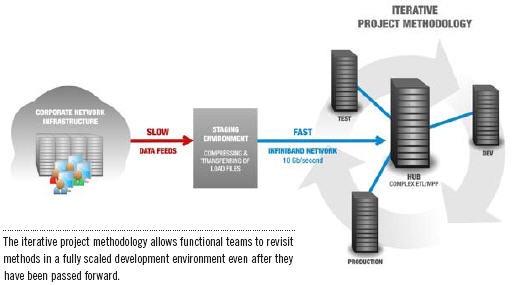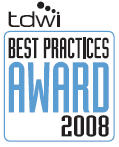Restaurant managers don’t have a lot of time to run reports or analyze data, so they like being able toview pertinent information just by pushing buttons in a dashboard.

Most business users don’t have access tothe data they need to make better decisions,although most of this data already resides intheir company systems. Search technologycan find data if it exists in a cell, report, ordocument that someone else has generated.But if you’re looking for something new—aggregated, summarized, or trending data thatrequires you to create a new report—thenyou’ll need a technology that conducts analysisas well as search. Historically, businessintelligence (BI) tools have been the answer,but usability has limited accessibility andprevented positive results. TDWI researchreports adoption rates in the low 20%range of users within the enterprise.(Wayne W. Eckerson, TDWI’s Best of BI,Vol. 5, 2007, “Contemplating Consolidation,”p. 14.) The problem is not just the complexityof BI tools, but the need to understandthe data—where it’s stored, what it’s called,and how it’s structured. IT and BI analystshave historically owned the data and accessto it, because they know how to get at it andhave learned the tools of the trade used toleverage it.
Business intelligence (BI) solutions haveevolved beyond the traditional query, reporting,and dashboard tools that tell you howyour business performed in the past. Cutting-edgeanalytic and predictive capabilities,and visualization and delivery enhancementsare examples of the advances of the pastfew years. But these new choices can seemdaunting to customers seeking to implementa new BI strategy or to rationalize their existingBI toolset. Oracle’s observations on howleading edge companies are implementing BIcan help other organizations focus on what’simportant when researching BI solutionproviders.
Improving access to trusted information andextending the BI environment across the enterpriseis driving better decisions and businessperformance at Rite-Hite Corporation.
SAP AG recently announced its businessintelligence (BI) product roadmap and notsurprisingly, it is based upon the businesswarehouse (BW) foundation—along with anoptional hardware appliance—a BI Accelerator—to enhance query performance.

Corporate data warehousing has seen dramaticincreases in volume and complexity over the last several years. Increasingly stringent regulatory requirements coupled with dramatic business success stories have catapulted organizations towards low-cost DW appliances to manage VLDW (very large data warehouse) projects. Indeed, VLDW projects in the hundreds of terabytes are increasingly commonplace. There are considerationsbeyond speed and price, however. The processes,methods, and resources required to successfully realize an enterprise VLDW deployment on these appliance technologies must keep pace with the eye-popping performance metrics.

TDWI’s Best Practices Awards recognizeorganizations for developing and implementingworld-class business intelligence and datawarehousing solutions. Here are summariesof the winning solutions for 2008.